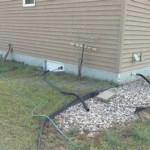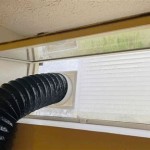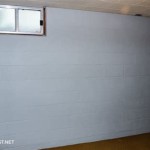Flooding In Basement: What To Do in Germany
Flooding in basements presents a significant challenge for homeowners in Germany, where robust infrastructure often mitigates but cannot entirely eliminate the risk of water damage. Geographic location, aging building stock, and increasingly unpredictable weather patterns contribute to the potential for basement flooding. Understanding the appropriate response and preventative measures is crucial for minimizing property damage and ensuring the safety of residents.
In Germany, basements (Keller) are commonly used for storage, laundry facilities, or even living spaces. Their subterranean nature inherently makes them vulnerable to water intrusion. Heavy rainfall, burst pipes, sewer backups, and rising groundwater levels are all potential causes of basement flooding. Recognizing the source of the water is a critical first step in addressing the problem effectively.
Immediate Safety Measures
The primary concern during a basement flooding event is safety. Before taking any action, assess the immediate environment for potential hazards. Electricity poses a significant risk in flooded areas, so the first priority is to disconnect the power supply to the affected area, if it can be done safely. Locate the main circuit breaker for the basement and switch it off. If you are unsure about doing so or if the breaker is located in the flooded area, contact a qualified electrician immediately. Do not enter the flooded basement if there is any risk of electrical shock.
Avoid wading through the water unnecessarily. Hidden debris, sharp objects, and contaminated water can pose physical dangers. Wear protective clothing, including waterproof boots, gloves, and eye protection, if entry into the flooded area is unavoidable. Contaminated water can contain bacteria, viruses, and other harmful substances, necessitating proper protection to prevent illness.
If the floodwater is rapidly rising, evacuate the basement and contact the fire department (Feuerwehr) or emergency services (Notruf). Their expertise and equipment are essential for managing severe flooding situations and ensuring the safety of residents. They can also provide guidance on the best course of action.
Documenting the Damage and Contacting Insurance
Once the immediate safety concerns have been addressed, the next step involves documenting the damage for insurance purposes. Take photographs and videos of the flooded basement, including the water level, damaged belongings, and any structural damage. This documentation will serve as evidence when filing an insurance claim and will aid in the assessment of the damage.
Germany boasts a comprehensive insurance system, but not all home insurance policies cover basement flooding. Check your homeowner's insurance policy (Hausratversicherung and Wohngebäudeversicherung) to determine the extent of coverage for water damage. Note the policy number, deductible, and any specific exclusions related to flooding. If you are unsure about your coverage, contact your insurance provider immediately. They will be able to clarify the terms of your policy and guide you through the claims process.
In many cases, a separate flood insurance policy (Elementarschadenversicherung) is required for coverage against natural disasters such as heavy rainfall and overflowing rivers. This type of insurance is particularly important in areas prone to flooding. Review your insurance policies carefully to understand what is covered and what is not. It is also advisable to contact your insurance company as soon as possible after the flooding event to initiate the claims process. They will likely send an adjuster to assess the damage and determine the amount of compensation you are entitled to.
When contacting your insurance company, provide them with all relevant information, including the date and time of the flooding, the estimated amount of damage, and the steps you have taken to mitigate further damage. Keep a detailed record of all communication with your insurance company, including dates, names of representatives, and summaries of conversations. This record will be helpful if any disputes arise during the claims process.
Water Removal and Drying the Basement
After documenting the damage and contacting your insurance company, the next step is to remove the water from the basement. If the water level is low, you may be able to use a sump pump (Kellerpumpe) or a wet/dry vacuum cleaner (Nass-/Trockensauger) to remove the water. Ensure that the sump pump is properly sized for the volume of water and that it is placed in the lowest point of the basement. Continuously monitor the pump to prevent it from overheating.
For larger flooding events, it may be necessary to hire a professional water damage restoration company. These companies have specialized equipment and expertise to remove water quickly and efficiently. They can also identify and address hidden moisture pockets that can lead to mold growth. Professional water damage restoration companies are equipped with powerful pumps, dehumidifiers, and air movers to thoroughly dry the basement and prevent further damage.
Once the water has been removed, it is essential to dry the basement as quickly as possible to prevent mold growth. Open windows and doors to allow for ventilation, and use fans to circulate air. Dehumidifiers can also be used to remove moisture from the air. Ensure that all surfaces are thoroughly dried, including walls, floors, and ceilings. If the basement has carpeting or other absorbent materials, these should be removed and discarded to prevent mold growth.
Pay particular attention to areas that are hidden or difficult to access, such as behind walls and under flooring. These areas are prone to mold growth and require thorough drying. Professional water damage restoration companies use moisture meters to detect hidden moisture pockets and ensure that the basement is completely dry.
Consider using mold inhibitors and disinfectants after cleaning and drying the basement. These products can help to prevent mold growth and kill any remaining bacteria or viruses. Follow the manufacturer's instructions carefully when using these products.
Discard any items that have been contaminated by floodwater, especially food, medicine, and personal hygiene products. These items may contain harmful bacteria or viruses and should not be used. Thoroughly clean and disinfect any salvageable items, such as furniture and clothing. Launder clothing in hot water with detergent and bleach, if appropriate. Furniture can be cleaned with a mild detergent and water solution.
It is crucial to monitor the basement for signs of mold growth after the drying process is complete. Look for discoloration, musty odors, and visible mold. If you suspect mold growth, contact a professional mold remediation company. Mold can pose serious health risks, and it is important to address it promptly and effectively.
Preventative Measures to Minimize Future Risk
Preventing basement flooding is often more effective and less costly than dealing with the aftermath of a flood. Several preventative measures can be taken to minimize the risk of future flooding events.
Ensure proper drainage around the foundation of the house. The ground should slope away from the foundation to prevent water from pooling around the basement walls. Clean gutters and downspouts regularly to prevent them from becoming clogged with debris. Extend downspouts away from the foundation to direct water away from the house.
Install a sump pump with a battery backup. A sump pump will automatically remove water that accumulates around the foundation. A battery backup will ensure that the pump continues to function during power outages. Regularly test the sump pump to ensure that it is working properly.
Consider installing a backflow preventer in the sewer line. A backflow preventer will prevent sewage from flowing back into the basement during heavy rainfall or sewer backups. This device is particularly important if your home is located in an area that is prone to sewer backups.
Seal cracks and gaps in the foundation walls. Cracks and gaps in the foundation walls can allow water to enter the basement. Seal these cracks and gaps with a waterproof sealant.
Landscaping can also play a role in preventing basement flooding. Plant trees and shrubs away from the foundation to avoid root intrusion into the foundation walls. Choose plants that are drought-tolerant and do not require excessive watering.
Regularly inspect the basement for signs of water damage, such as dampness, discoloration, and musty odors. Address any issues promptly to prevent them from becoming more serious. By taking these preventative measures, homeowners in Germany can significantly reduce the risk of basement flooding and protect their property from water damage.

Flooded Basement Cleanup What You Need To Know

Basement Flooding Or Standing Water Problem Sign

How To Prevent Basement Flooding Chubb

Germany Nursing Home Flood Video

Southern Germany Battles Floods As Experts Say Berlin Will Miss Climate S Politico

Germany Floods Four Die And Thousands Flee Homes In Southern Areas

Flooded Basement Cleanup What You Need To Know

Neighbor Helping German Volunteers Lead Flood Recovery The New York Times

4 People Have Died In Floods Southern Germany The Situation Remains Tense World News Thecanadianpressnews Ca
4 People Have Died In Floods Southern Germany The Situation Remains Tense







